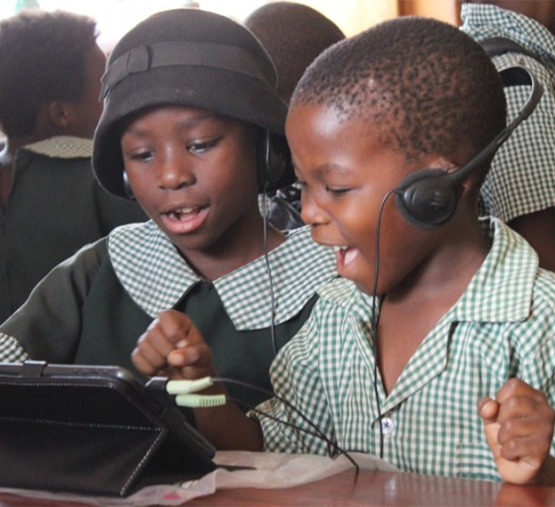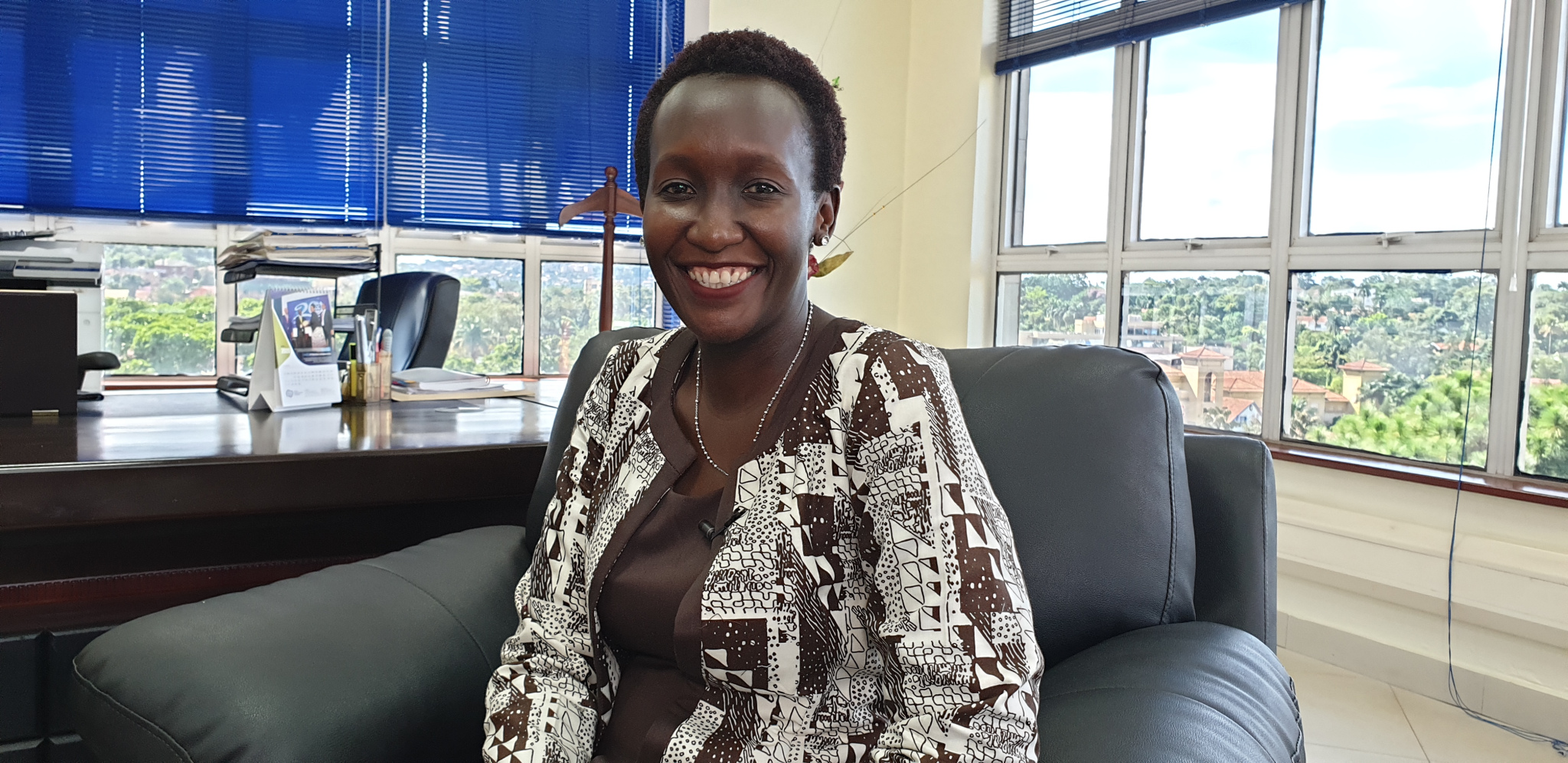
How Uganda can harness ICTs
Baca Juga


Irene Kaggwa Ssewankambo
The history of the communications industry dates back to when messages were transported from one point to another by roadrunners and pigeons.
This evolved into letter writing. Soon came inventions such as radio and telephone.
Today we can have instant communication with almost anyone in the world, either via telephony or the internet.
When we talk about Information and Communications Technologies (ICTs), though, we are referring to any facilities, services, networks and applications (including infrastructure, equipment, user devices, computer hardware and software, network protocols, etc) used in the capture, processing, transmission, storage, retrieval and display of information electronically (data), whether in form of text, imagery or voice.
This includes phones, radio, television, computers, digital cameras, the networks on which these operate, and the internet.
However, ICTs have evolved beyond being just about communication between two people.
They are now globally regarded as a key infrastructure for social and economic development, in a context similar to other public infrastructure such as transport, electricity, drainage and sewage systems.
This has been largely due to the transformative and catalytic effect of ICTs on different aspects of the economy and our daily lives, both directly and indirectly.
One of the key drivers of the developments in ICTs is convergence.
This convergence phenomenon resulted in the integration or combining of different previously discrete functionalities (telecommunications, broadcasting and/or computing/information technology) into a single device or solution.
A telephone became a computer, a camera, a radio or television, shop, compass all rolled in one.
The 4th Industrial Revolution (4IR) or Industry 4.0 has enhanced this convergence trend, further integrating different technologies. 4IR enables transformation (in production, work and elsewhere) by using systems that integrate the capability of sensing, computation, control and networking into physical objects (like household appliances, cars, electricity meters, factory machines) and infrastructure to connect them to the Internet and to each other.
There are three key transformational technologies in the ICT industry today associated with the 4IR. The first of these is Artificial Intelligence (AI).
This involves intelligent machines that are able to mimic human intelligence (the understanding, thinking and acting) while handling a task that normally a human would perform.
AI learns from new information (data) and experiences, then uses logical reasoning to solve problems or handle tasks.
The second one is Distributed Ledger Technology (Blockchain). This is an immutable distributed or decentralised database (i.e., without a central repository) that grows in “blocks” with addition of transaction records.
The blocks are chained together by cryptographic signatures.
The transaction records cannot be changed or deleted, and may be viewed or seen by anyone with authorised access to the blockchain network.
The third is Internet of Things (IoT): These are physical devices with electronics implanted in them to be able to connect to the Internet and thus collect data, exchange data, make decisions, and/or be controlled remotely.
Mobile technology is still a big component of this ecosystem with 5G (the fifth generation in the family of the mobile technologies) being developed to provide the network capacity required to facilitate the movement of the associated volumes of data instantaneously.
4IR is a typical disruptive technology, creating major changes to traditional business and operational models.
4IR provides developing economies like Uganda an opportunity to leapfrog by achieving faster growth rates and attaining higher levels of prosperity in a shorter span of time.
According to the African Development Bank, the greatest risk to developing countries is missing the opportunity presented by this technological revolution.
What does all this mean in our lives? Maybe let us ask the simpler question: What do ICTs mean in our lives?
As individuals, people are always looking for improvements in their daily lives. ICTs enable industries and sectors to create for us personalised experiences such as in media, entertainment and education. ICTs improve convenience by making services accessible anywhere, anytime.
Today we can do a lot of things using a phone, including remotely controlled households, due to SMART or connected appliances.
ICTs have also enabled us to enjoy secure, reliable and efficient public and private services electronically.
ICTs also present social and economic opportunities such as jobs, business improvements, continuous education, and inclusivity.
An organisation, on the other hand, seeks to realise improvements in performance in terms of efficiency, production and quality.
This can be achieved by leveraging ICTs to undertake process automation, improvement in information management, facilitation of timely monitoring and evaluation, easy access to a wealth of information and better stakeholder management.
Opportunities presented by ICTs in some of the key sectors
Education and Research: ICTs provide access to an endless supply of information on almost any topic or question.
ICTs also present opportunities for formal and informal learning across the course of one’s entire life, enabling workers to upskill and perform new tasks over a lifetime of changing work environments.
This COVID-19 period has demonstrated the opportunities in accessing classes or study with distant institutions without the cost of travel and upkeep.
ICTs enable collaboration of researchers at national and international levels, enabling leveraging of resources and capability.
ICTs now facilitate the creation of motivational, contextualized and personalized (based on abilities and needs) support for students instead of the “one size fits all” approach.
The recent ICTs have made it possible to provide real time integration of multi-language subtitles to help students participate even remotely.
Health: ICTs in the health sector present enormous opportunities such as easing communication between patients and doctors, consultation between remote doctors, dissemination of health education messages to the public, training of health workers, enabling a secure national patient records management accessible at nationally distributed medical facilities, patient isolation and timely delivery of medical supplies to remote locations.
Agriculture: ICTs are being used to improve agricultural production through their use in monitoring, measurement and variation of growth and soil conditions to accurately manage crop production.
ICTs also enable farmers to access valuable information on farming inputs, market pricing, weather, disease control, extension services, financial services and value addition.
ICTs also assist in livestock tracking, precision spraying and irrigation.
Job opportunities & entrepreneurship: ICTs offer a reliable way of connecting to customers and suppliers. They also promote e-commerce for businesses of all sizes, enabling these to advertise and sell their goods and services -across the world.
ICTs also revolutionise the working day and hours, enabling functioning at all times.
Electronic financial services such as mobile money, Visa payment, Paypal, internet banking have also been made possible by ICT. Additionally, ICTs allow persons to set up businesses or offices at home and online thus reducing the cost of renting premises.
With ICTs, there is guaranteed improvement in efficiency of processes such as ordering of inputs, inventory management, bookkeeping and accounting.

What do we need to position ourselves to be able to harness these?
We need to increase the use of ICT in improving national economic growth and fostering transformational, sustainable development.
We have made some progress in terms of an increase in the number of government operations and public services available electronically.
Notable examples include Uganda Revenue Authority services, Uganda Registration Services Bureau, and the Directorate of Citizenship and Immigration Control (passports and visas).
The COVID-19 lockdown has also driven an increase in e-applications by Government and other stakeholders, especially in education and health care; e-commerce, as well as remote or online working.
However, there is still room for so much more.
The Digital Transformation Programme under the Third National Development Plan (NDPIII) seeks to increase use of ICT services for social and economic development and outlines key strategic actions in this respect.
We need to identify and develop more local use cases of these technologies and local digital content to increase their relevance and value to us in our development journey.
These benefits cannot be realised without connectivity, which necessitates having the ICT infrastructure in place. There has been an increase in the reach of national ICT infrastructure.
By mid-2019, about 74% of the population and 41% of the country was covered with a strong radio signal for both mobile data and voice, while about 96% of the population had a fair signal.
Notably though, we had only about 26 million mobile subscribers with just 15 million of these using the internet.
It has become critical for us to also address the availability and cost of devices required by end users to adopt and consume these ICT services. We need to, among others, explore local manufacturing or assembly of such devices.
As a technology neutral country, growth has also been registered in the use of other technologies such as optical fibre, WiFi and satellite.
The National optical fibre Backbone Infrastructure being rolled out by the National Information Technology Authority (NITA) has also been extended to a number of districts, enabling the connection of various Government institutions.
The coverage of FM radio broadcasting services on the other hand is at about 97%.
This again has not necessarily translated into accessibility by all due to the associated need to own a radio set. However, unlike other ICTs, radios can be shared.
One of the other issues that we have to address is the awareness by potential users of the opportunities presented by ICTs as well as the skilling required to develop and implement ICT use cases.
There are a number of efforts by Government, civil society and private sector that have been implemented across the country towards ICT human capital development and digital literacy.
The educational curriculum was amended to include ICT as a subject in secondary schools, and a number of primary schools have introduced programmes to acquaint children with the subject.
Digital literacy trainings have also been conducted for communities around schools to which ICT computer labs have been provided under the Rural Communications Development Fund of the Uganda Communications Commission (UCC).
There is also need to strengthen our ICT research and innovation ecosystem in Uganda to boost national competitiveness, and to identify ICT solutions to local challenges.
Various universities have created research programmes, including 4IR related ones.
The Ministry of ICT and National Guidance also established the National ICT Initiatives Support Programme to support local ICT innovation and enable the exportation of knowledge products.
This is complemented by efforts by the various innovation and incubation hubs established by academia and the private sector.
UCC is also establishing an Innovation Test Bed to foster research, innovation and analysis of various ICTs, including the development of locally relevant use cases or applications.
We also have a National Conference on Communications that brings together Government, academia and private actors to inform the conceptualisation of research topics and relevance of outputs.
There is, however, a need to deepen partnerships among academia, research institutions and industry actors in the different facets of research, including experimentation and piloting.
Another area to be addressed is the strengthening of the policy, legal and regulatory frameworks to create an enabling environment that fosters the smart but safe development and inclusive use of ICTs.
This includes defining strategic goals as well as developing enabling laws, standards, regulation, and institutional arrangements.
Areas of consideration include Data protection, Data sharing for innovation, Cyber security, Digital identity, Digital certification (digital signature), Data integrity, ethical design of solutions and systems, interoperability of systems, taxation of e-transactions, as well as infrastructure deployment and development.
We also need to foster fair competition in the market in order to have quality, affordable services that are accessible to all.
The author is the Acting Executive Director of Uganda Communications Commission
The post How Uganda can harness ICTs appeared first on Nile Post.

0 Response to "How Uganda can harness ICTs"
Post a Comment